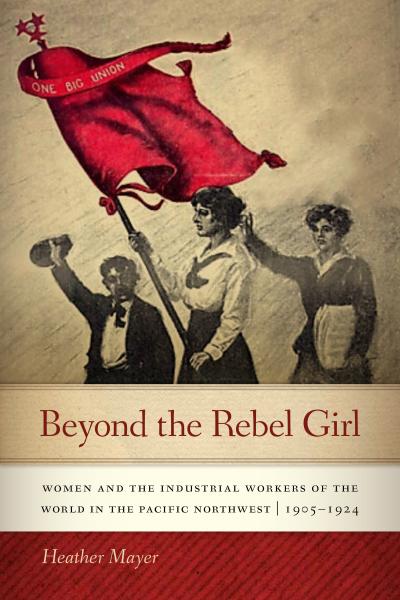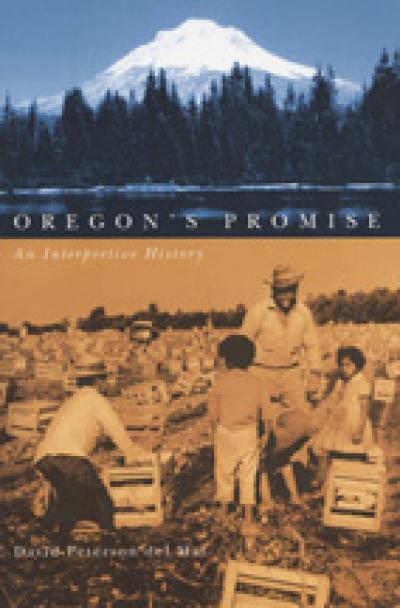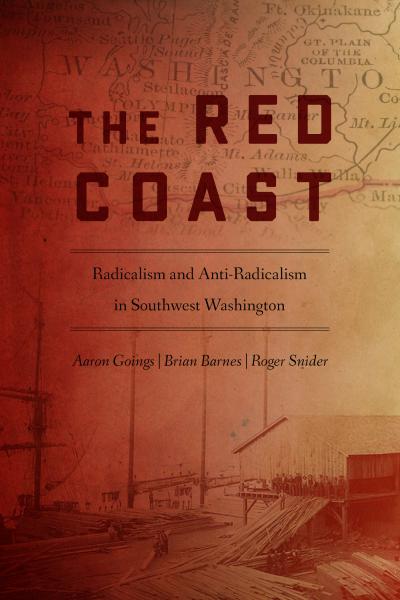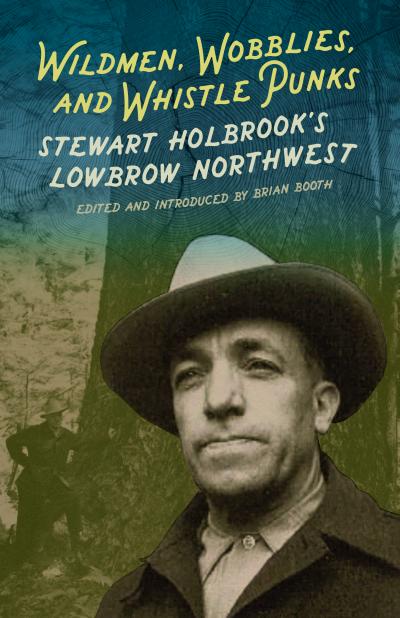
Harvest Wobblies
Greg Hall
Increased Mechanization and the expansion of new markets transformed the face of American farming in the early decades of the twentieth century, especially in the American West. These changes demanded a new kind of agricultural worker--gone was the local farmhand, replaced by a cheap and temporary labor force of migrant and seasonal workers. Greg Hall's fascinating book analyzes how "harvest Wobblies," members of the Industrial Workers of the World (IWW), organized these men, women, and sometimes children who had become so essential and yet so exploited on the farms of the West.
Although harvest Wobblies worked in nearly all the western states, their stongholds were the Great Plains, California, and the Pacific Northwest, regions where harmers developed monocrop agriculture and where seasonal labor was indispensable come harvest time. Like their IWW brethren in logging camps and mines, the harvest Wobblies combined an effort to improve the lives of workers with harger revolutionary goals. Harvest Wobblies personified most of the indelible features of IWW membership: they were the militant casual laborers of the American West, riding the rails, living in hobo jungles, preaching revolution, and facing repression with innovative strategies, impassioned speech, humor, and song.
Through trial and error, Wobbly organizers eventually implemented the idea of an industrial union in agriculture and helped the IWW to establish itself as a powerful force to be reckoned with by employers in the West. In tracing the rise and the eventual fall of the harvest Wobblies, Greg Hall examines the diverse and changing nature of the agricultural work force. He offers a social and cultural history of a union uniquely suited to organizing tens of thousands of migrant and seasonal workers. Harvest Wobblies will appeal to a broad audience of readers interested in labor history, the American West, U.S. agricultural history, and the history of the IWW.
About the author
Greg Hall is Professor of History at Western Illinois University.
Read more about this author
Introduction
Chapter One
Working for Wages in the West
Chapter Two
Orgainizing Workers in the Streets and on the Farms
Chapter Three
A Bumper Crop of Harvest Wobblies
Chapter Four
War and Persecution
Chapter Five
Perseverance Amid Change
Chapter Six
The Resurgence of Harvest Wobblies
Chapter Seven
The Road to Oblivion
Epilogue
Notes
Bibliography
Index
In the summer 1923, the Agricultural Workers' Industrial Union (AWIU) was at a high point in membership and exercised significant influence within the Industrial Workers of the World (IWW). It was also at near-maximum strength across the North American wheat belt that stretched from West Texas to the Canadian prairies. In a small but significant portion of the western wheat-growing country. AWIU members, whom I call "harvest Wobblies," saw an opportunity to gain an organizational foothold and to reassert themselves in an area they had long contested with employers. At first a small group of harvest Wobblies met with several bankers and a Whitman County official at the Farmer's National Bank in Washington's wheat town of Palouse, named after the state's rich Wheat-growing region. The conference participants, however, could not agree on a standard wage for harvest or threshing work. Yet harvest Wobblies believed that they had the advantage. Area farmers were enjoying a bumper wheat crop, but they lacked an adequate supply of labor. The AWIU members considered themselves strong enough to hold up the harvest and threshing of the valuable wheat with a strike, thereby achieving their demands.1
Harvest Wobblies fanned out among independent harvest workers in the Palouse country, taking their message to small eastern Washington towns. Back in spokane, they created a Whitman County Strike Committee. In August 1923, the Wobblies urged their fellow harvest workers to strike. The strike call was not only for recognition of the AWIU but for improvements in local wages and working conditions and for the release of political prisoners held in state and federal prisons. Although a majority of farm workers in eastern Washington's wheat country had been independent, the Awiu was successful in gaining support. By the end of August, a region-wide agricultural strike gripped eastern Washington. Workers honored IWW picket lines at the downtown Spokane municipal employment bureau, temporarily shutting down the flow of harvesters to sites in the Palouse. In addition, some threshing workers refused employment offered to them in Spokane by Whitman County farmers who would not provide beds but expected their hired hands to bring their own blankets for sleeping in straw stacks or in barns on their farms. In the countryside, harvest Wobblies instigated work stoppages among a number of threshing crews, some as far south as Uniontown, at the Southern end of the Palouse.
Organizing a strike at a worksite had its consequences, as Al Cook and E. Preager discovered in Uniontown when the local sheriff arrested them and took them to the county jail. Opposition to their strike efforts only emboldened harvest Wobblies, however, for they soon took their message to the streets of Colfax, the county seat. Within the next several days, sheriff's deputies arrested seven more IWW members. Among them, John Murphy and Frank Shields faced the most serious charges of criminal syndicalism, under a law designed to suppress the IWW. A. Steward, Joe murray, and several other men sat in jail on lesser charges awaiting appeal. Keeping these men company were Fred McGarrahan and J. Perry, serving thirty days for passing out strike handbills on the streets of Colfax. The handbill they distributed was probably the one issued by the Strike Committee for circulation among harvest and threshing workers. In part it read:
Leave the jobs!
Tell the boss you are not going to return until the Class-War Prisoners of America are released.
In you lies the power to force the issue. Without your work the boss will starve. You do all the work and the boss gets all the money.
It is time that we, the workers, get a little of what we produce.
Keep out of Whitman County!
Boost for the general strike!
Fortunately for harvesters in eastern Washington, the strike brought about a one-dollar-a-day increase in wages for a variety of agricultural jobs. In Whitman County, though, law enforcement officials continued to arrest Wobblies. In mid-September, the AWIU members in the Colfax County jail escalated the confrontation with a hunger strike and a noise campaign. Most of the members joined the hunger strike, and all participated in the noise-making strategy to disrupt the jailhouse and the local neighborhood. According to John Kelley, who spent thirty-two days in the county facility, "The big show starts at 11 o'clock and continues [until] 20 minutes after the hour, then silence until the clock strikes the next hour." The noise usually subsided in the small hours of the morning. According to Kelley, Sheriff William Cole, the keeper of this crew of rambunctious prisoners, greeted them in the morning with, "Boys, please don't do that." Joe Murray, an occasional spokesman for the jailed Wobblies, deemed the hunger strike and noise campaign successful. Prosecutors eventually dropped criminal syndicalism charges against Murphy and shields within a week of Murray's prison update in the industrial Worker, the sheriff released the rest of the jailed harvest Wobblies.3
No mass release of state-held prisoners held on criminal syndicalism charges followed the incident in eastern Washington, however, until December, when President Calvin Coolidge decided to release all remaining IWW federal prisoners who had been serving sentences since the mass wartime trials. In doing so, Coolidge was bowing to pressure from within his own government and to growing nationwide sentiment that the war and postwar antiradical hysteria had resulted in serious excesses of federal power. Throughout this period, but especially in 1922 and 1923, branches of the IWW in agriculture, mining, construction, marine transportation, and logging continually pressed federal authorities to release their members from prison through strikes, boycotts, and petition campaigns. Most of the IWW strikes during the early 1920s combined a demand for the release of political prisoners with improvements in local wage and working conditions and union recognition.4
The harvest Wobblies of eastern Washington followed this pattern of combining the effort to improve the work lives of laborers with larger goals that were significant for the life of their revolutionary union. Furthermore, they displayed their solidarity in the face of repression with innovative strategies and with humor. Though these particular IWW members passed quickly from the public consciousness, they are part of the history not only of the IWW but also of agriculture in the American West. The story of the work lives and unionizing efforts of the IWW members who labored in agriculture is one that has not been told in its entirety.5
Harvest Wobblies, in the form of the Agricultural Workers' Organization AWO and later the AWIU, eventually became one of the largest and most dynamic constituencies of the IWW. Their greatest organizational achievements were in the West. From the founding of the IWW in 1905 until the mid-1920s, harvest Wobblies had to face challenges to their organizing efforts from unions affiliated with the American Federation of Labor (AFL) on the Pacific Coast and from ethnic associations of Asian and Hispanic farm workers that focused on immigrants. State and federal farm labor exchanges contested the IWW's efforts to supply and distribute farm labor as well. Despite these obstacles, the IWW's agricultural branch grew by leaps and bounds, even after the repression the union faced during World War I and in the immediate postwar era. From 1915 to 1925, over half of the IWW's finances originated with the AWO or the AWIU.
Moreover, the agricultural branch of the IWW became a proving ground for many of the best organizers and leaders of the union. Even more important, harvest Wobblies personified some of the most indelible features of the union membership. They were the militant casual laborers of the American West, riding the rails, living in makeshift camps known at "jungles," and preaching industrial unionism and revolution in the workplace. They, along with other Wobblies of the West, created the footloose, masculine, rebel worker culture of the IWW. They migrated across the country, working in agriculture, construction, mining, logging, and marine transportation on a seasonal basis. They were part of what historian Carlos. A. Schwantes refers to as the "wageworkers' frontier," the workforce that industrialized the West and built its infrastructure during the late nineteenth and early twentieth centuries. Overall, the IWW proved to be most successful at organizing these western workers, with harvest Wobblies playing a significant role. In doing so, harvest Wobblies spread the union's message to some of the most exploited workers in American industry, those in agriculture (fig.1).6
The workers among whom harvest Wobblies traveled, worked, and lived during the first few decades of the twentieth century in the American West have been chronicled by historians, sociologists, ethnographers, novelists, and others. Yet this period remains largely unexplored by historians of western farm labor.7 These workers represented a new phenomenon in American agriculture at the close of the nineteenth century, as farming in the West moved to an overwhelmingly market-oriented enterprise. Many farmers were forced to turn to monocrop agriculture in order to survive economically. With technological innovations, farming became increasingly more mechanized, making it possible for farmers to plant thousands of acres. In the Great Plains, these acres tended to be planted in wheat. Yet even small farmers who had to plant several hundred acres of wheat to remain economically solvent could not harvest the crop without seasonal help. Migrant and seasonal farm labor became as indispensable for wheat farmers to harvest their crops as the railroad was for getting those crops to market. In California and Washington, and in other parts of the West, railroad expansion, irrigation, and new refrigeration technology were the forces that drove the development of commercial agriculture, but migrant and seasonal farm labor were essential to the harvest of the grains, fruit, vegetables, potatoes, sugar beets, and many other crops grown in these regions.
In the mid-nineteenth century, when farms were more diverse, farmers used local farmhands as seasonal labor. The farmhand was a kind of apprentice farmer, whose goal was to save enough of his earnings and buy a farm for himself one day. This was known as the "agricultural ladder." But this ladder broke down as arable land filled up with farms, and prices for land and equipment rose beyond what a worker could hope to save. By the turn of the twentieth century, American farming, particularly in the West, relied on the agricultural labor of migrant and local seasonal workers who would never become farmers.8
These were the workers that the IWW tried to organize, making the first effort in U.S. history to bring all agricultural laborers into one all-inclusive industrial union. Though the West is a vast area with many different subregions, I am using the ninety-eighth meridian to define where the West begins. Therefore, for this study, the West comprises the Dakotas, Nebraska, Kansas, Oklahoma, and Texas, and extending west to the Pacific Coast states of California, Oregon, and Washington. The ninety-eighth meridian is a geographic demarcation based on aridity, but it also denotes the beginning of a subregion of the West called the Great Plains. Here, where the North American wheat belt extends from West Texas to the Canadian prairies, as many as a quarter of a million migrant and seasonal workers traversed the plains, harvesting and threshing wheat, until the advent of the combine in the second half of the 1920s. But there are also other significant subregions of the West where farmers developed extensive and intensive agriculture. Eastern Washington's Palouse and the fruit-growing areas of the Yakima and Wenatchee Valleys were some of the earliest western agricultural zones to require tens of thousands of seasonal workers every harvest and packing season during the early decades of the twentieth century. And as early as the 1870s, the farms of California's central river valleys required seasonal laborers. California's agribusiness would eventually become the largest user of migrant farm labor in the American West.9
The IWW, between 1909 and 1925, was uniquely suited to organizing the tens of thousands of migrant and seasonal workers essential to western agriculture. When activists formed the union in 1905, they had two simultaneous goals, one practical and one revolutionary. First, the union would organize the masses of industrial American workers who were not members of the more conservative AFL-affiliated unions, regardless of the workers' skill level, industry, gender, race, ethnicity, or nationality. Within a few years, therefore, agricultural workers were actively sought after as IWW members.
The second goal of the IWW was to emancipate American workers from the exploitation of employers and the capitalist system by ushering in a egalitarian society in which workers controlled the means of production through their unions and received the full fruits of their labor. Wobblies would accomplish this goal through their unique union structure and the use of the general strike. In short, the IWW was a very different kind of labor association than the trade unionism of the AFL. While the AFL organized based on craft or trade within the industry, Wobblies organized based on the industry as a whole. Therefore they attempted to organize all workers in agriculture, construction, transportation, logging, or mining into constituent industrial unions. By organizing all of the nation's industries, Wobblies hoped to displace the AFL and eventually control the entire U.S. economy. From this position of economic power, the IWW could call a general strike and bring down the edifices of capitalism and the state. With an industrial union system in place, the IWW would be the foundation of a new classless, wageless, and socioeconomically just society. The IWW's revolutionary industrial unionism bore a striking similarity to European syndicalism, though few Wobblies labeled themselves syndicalists, or, for that matter, socialists. They were Wobblies, and they sought to bring together a disparate assemblage of the American left and every type of American worker into one great house of labor.10
These were, of course, distant goals. Until the IWW and the American working class achieved their ultimate victory over capitalism and its servant, the state, committed Wobblies strove to "build the new society within the shell of the old" by organizing the unaffiliated worker. They also sought to export their concept of revolutionary industrial unionism abroad, where it took root in Australia, Canada, and briefly in mexico. But it was among western agricultural workers that the IWW acquired the greatest number of adherents, primarily in the Great Plains. What accounts for this success in the West, especially in the nation's wheat belt? The answer lies in the harvest Wobblies' cultural appeal as a band of unionized workingmen migrating through the countryside. They appeared on the scene sometime between 1905 and 1909 and began to forge a bond with underskilled itinerant laborers that developed into collective historical agency. Many of the harvest workers who joined the AWO and later the AWIU wanted to put an end to their exploitation at the hands of farmers, law enforcement officials, and business interests through collective means. These workers were attempting something that had not been attempted in American agriculture up to that time: to address economic hardships and social marginality with the power of a union open to all agricultural wage workers. This would be the first of many efforts by agricultural laborers over the course of the twentieth century to improve their socioeconomic circumstances by union action. Through trial and error, harvest Wobblies eventually implemented the industrial union concept in agriculture, making them a force to be reckoned with by agricultural employers.
During the first few decades of the twentieth century, the vast majority of migrant and seasonal laborers working in western agriculture were white, native-born men. Among these predominantly unmarried workers, traveling by rail from job to job and living in "jungles," harvest Wobblies developed a distinctive culture of work and of life on the road, which I have termed their "worklife culture." They shared much of this culture with other migrant and seasonal agricultural laborers of the day. Yet the Wobblies embodied a unique camaraderie in the jungles, worksites, union halls, skid rows, jails, and freight cars of the American West. Their common experiences forged a socilcultural bond that was further strengthened by aggressive opposition to employers, law enforcement officers, and "hi-jacks," the robbers and confidence men who preyed on migrant harvest workers. Harvest Wobblies expressed themselves through an impressive outpouring of writing, impassioned speeches, union organizing, humor, and song. Sustained through several decades by a common sense of identity and purpose, they created a worklife culture that appealed to Great Plains migrant and seasonal workers, bringing tens of thousands of them into their union.11
This is the story of the harvest Wobblies, and the rise and fall of their revolutionary industrial union. It is also an investigation into the dramatic changes in western American agriculture during the early decades of the twentieth century, changes that propelled this union's growth.. What was the nature of the agricultural industries that the IWW sought to control? Who were the men and women that Wobblies wanted to organize, and why were they so essential and yet so exploited within the agricultural industries of the West? The history of the harvest Wobblies begins with the answers to these questions.




